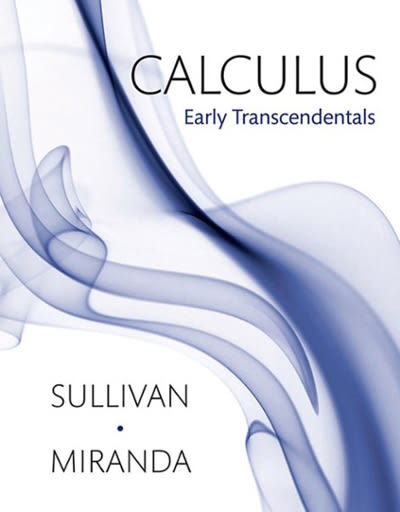Can you please help me with this and explain step by step questions 7-12 please and thank you . I will also add the image of the circle down
Assume we are given the coordinates of a point D exterior to the circle and on the x-axis, D(-2, 0) . From point D we want to draw a tangent line to the unit circle centered at the origin. Notice that now we do not have the coordinates of the point of tangency C; we have to find its coordinates. The idea is to draw an arbitrary secant line to the unit circle from the point D. (A secant line is a line that interests the circle at two distinct points; in the above picture, the line passing through points D, E, F is a secant line). Then look for the intersection of the secant line with the unit circle. This will be a quadratic equation. If you impose the condition that this quadratic equation has a unique solution, this amount to requiring point D and F to coalesce to one point, and that would be the point of tangency, C in our picture. I will guide you through the steps. 7. Verify that the equation of a (nonvertical) line through D(-2, 0) is given by y - 0 = m(x - (-2)) which simplifies to y = m (x + 2) , for slope m. 8. Derive a quadratic equation in the variable x that is the condition for the intersection of the line y = m (x + 2) with the unit circle x2 + y = 1. 9. Next, what is the condition for this quadratic equation to have a unique solution? (Geometrically, this means points E and F are coalescing into a unique point, we're calling C). This condition gives values for the slope m of the tangent line. What do we get two values for m, and what is its geometric interpretation. 10. What are the coordinates of the point of tangency C? 11. Verify that segment DC is perpendicular to the radius to point C. 12. Check your results are consistent with parts 1 and 2. Obviously, we can generalize this problem for an arbitrary point D(x1, y1 ) exterior to the circle (you can take y1 = 0 if you want). If you feel like doing this, I would be happy to look at your work. In what we just finished deriving, we found the tangent to a circle from an exterior point D, and in the process we found the point of tangency C. We can change perspective and ask, for a given point C on the circle, what is the equation of the tangent line. And then, if we are interested, we can look for the intersection of the tangent line through point C with the x-axis, and find the coordinates of point D. (This assumes in our choice of coordinate system we are not looking at the north or south poles where the tangent lines are horizontal lines, hence do not intersect the X-axis)







